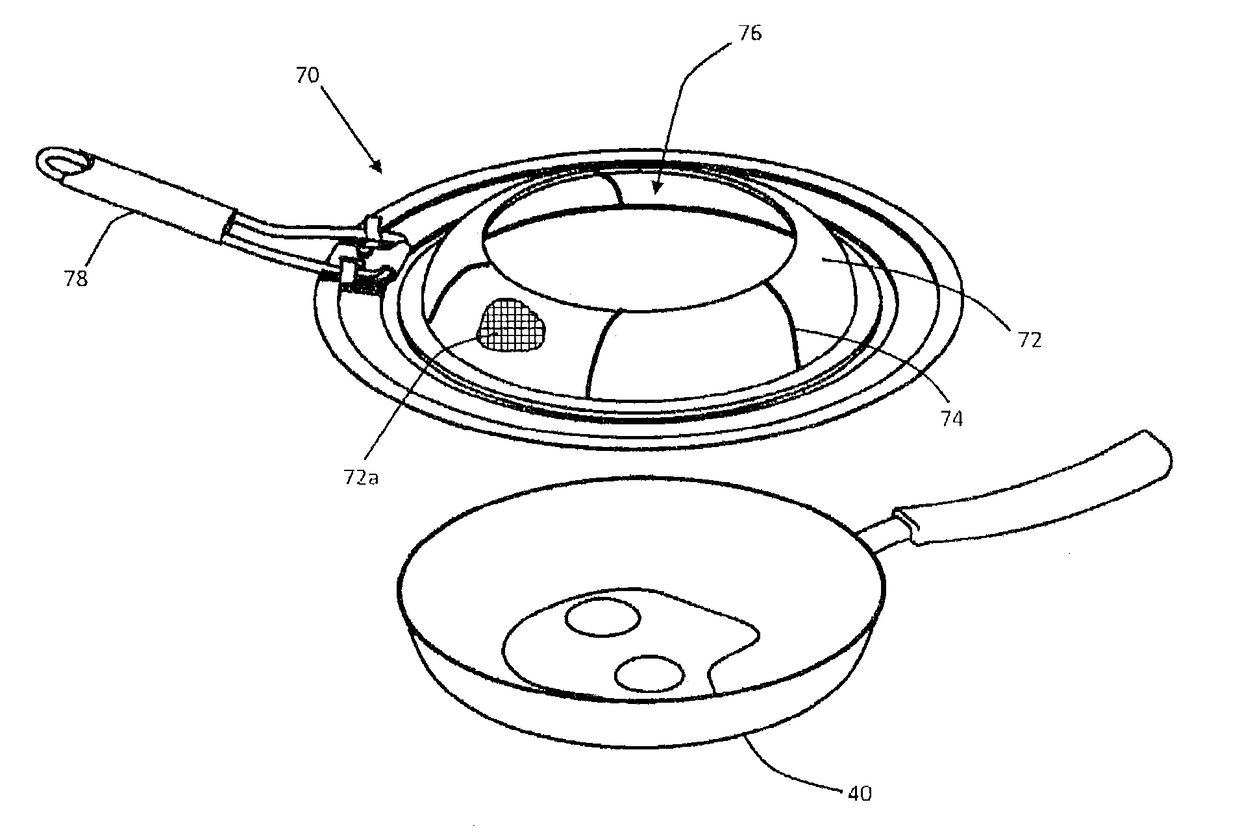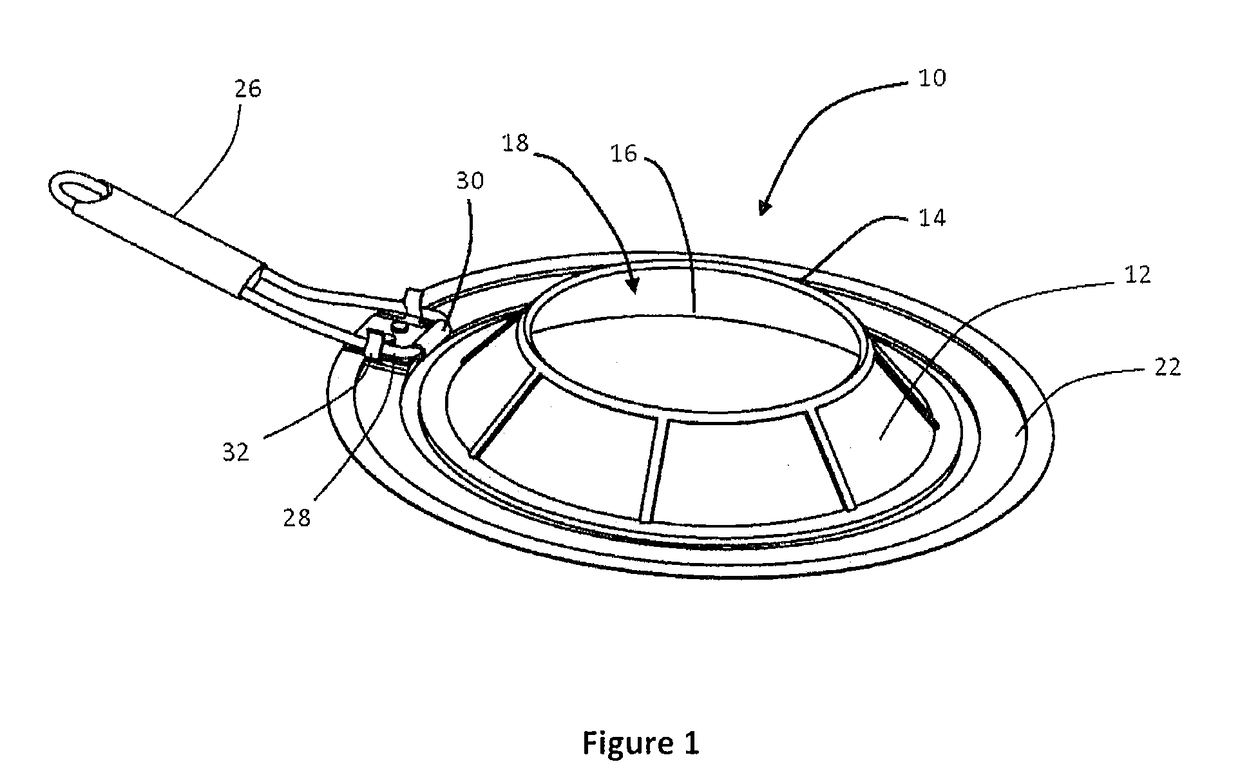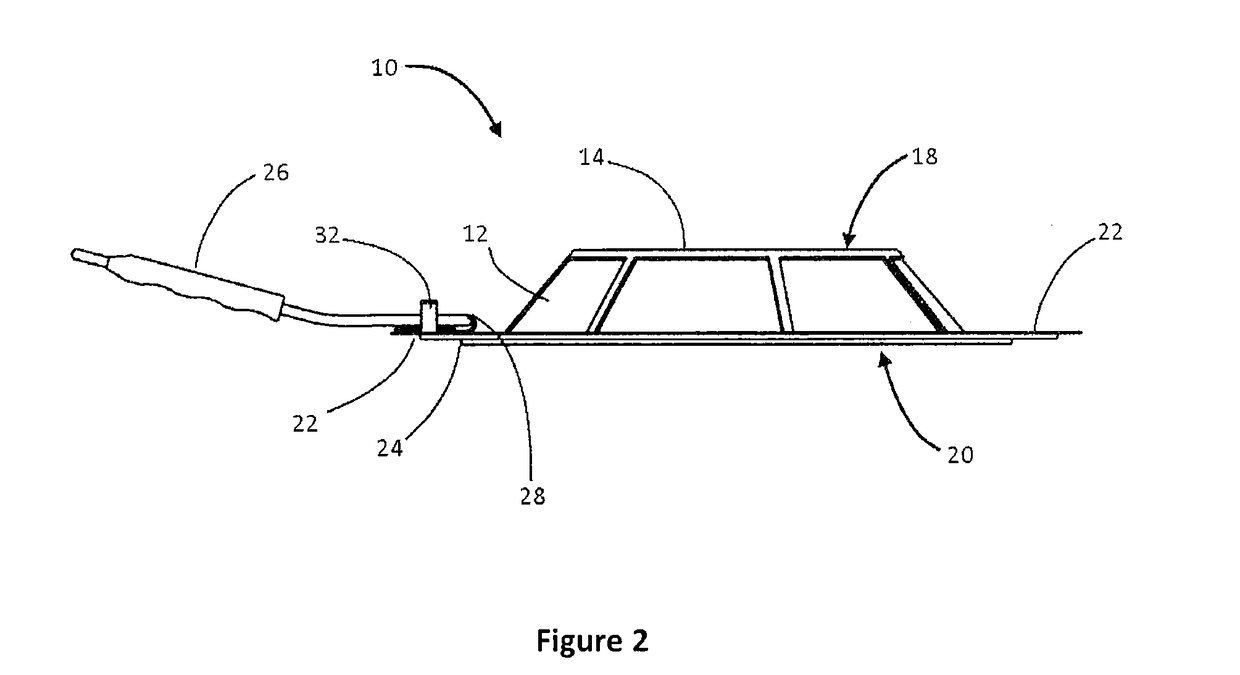Method of Cooking Utilizing a Splatter Shield
a technology of splatter shield and cooking surface, which is applied in the field of cooking utilizing splatter shield, can solve the problems of splattering grease on the surrounding cooking surface and countertop, affecting the cooking effect, so as to prevent the steaming of food
- Summary
- Abstract
- Description
- Claims
- Application Information
AI Technical Summary
Benefits of technology
Problems solved by technology
Method used
Image
Examples
Embodiment Construction
[0027]It is to be understood that the invention may assume various alternative orientations and step sequences, except where expressly specified to the contrary. It is also to be understood that the specific devices and processes illustrated in the attached drawings, and described in the following specification are simply exemplary embodiments of the inventive concepts defined in the appended claims. Hence, specific dimensions, directions or other physical characteristics relating to the embodiments disclosed are not to be considered as limiting, unless the claims expressly state otherwise.
[0028]The splatter shield of the invention is formed with a half-domed or truncated cone configuration and includes a substantially sized, central opening in its top. The walls of this splatter shield are configured to contain substantially all the grease splatter except that which goes vertically from the pan. The opening is sufficiently large to allow the cook easy access to the cooking food in ...
PUM
 Login to View More
Login to View More Abstract
Description
Claims
Application Information
 Login to View More
Login to View More - R&D
- Intellectual Property
- Life Sciences
- Materials
- Tech Scout
- Unparalleled Data Quality
- Higher Quality Content
- 60% Fewer Hallucinations
Browse by: Latest US Patents, China's latest patents, Technical Efficacy Thesaurus, Application Domain, Technology Topic, Popular Technical Reports.
© 2025 PatSnap. All rights reserved.Legal|Privacy policy|Modern Slavery Act Transparency Statement|Sitemap|About US| Contact US: help@patsnap.com



